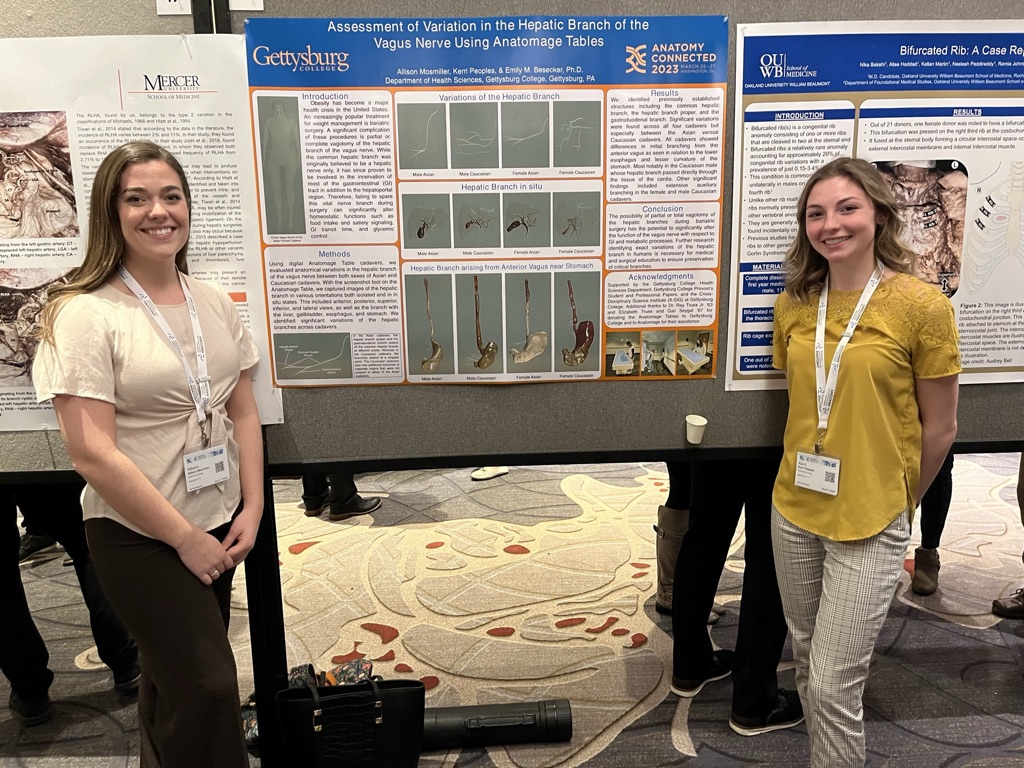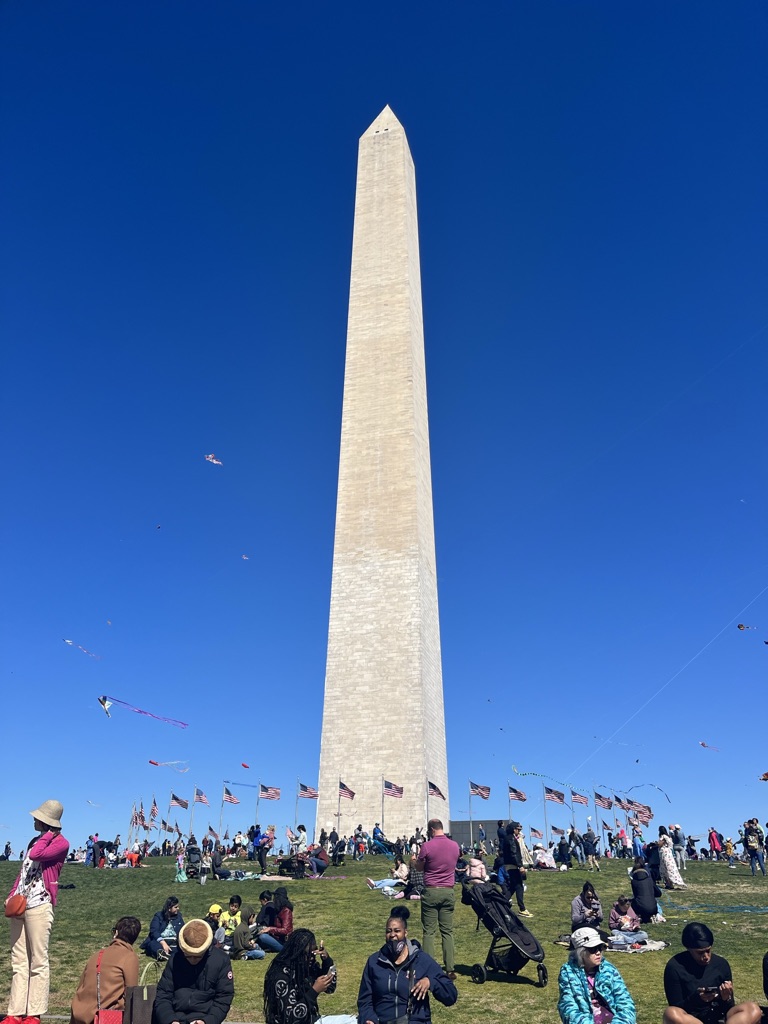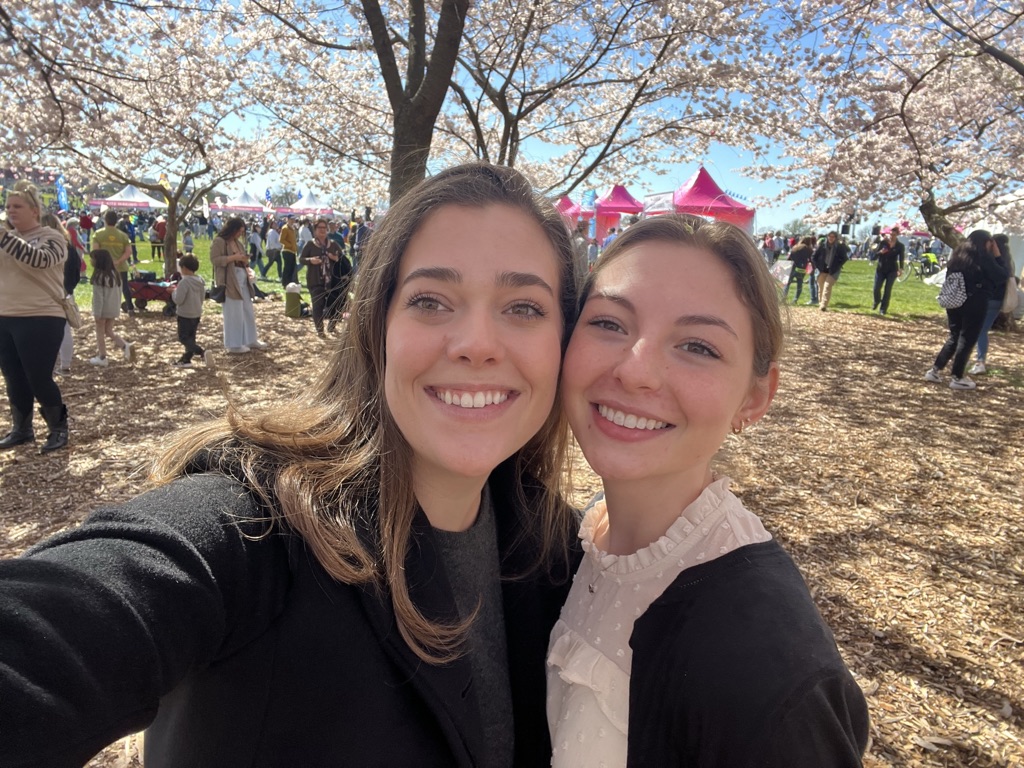My name is Allie Mosmiller, and my partner, Kerri Peoples, and I have been working with Dr. Emily Besecker for the past two semesters doing research on the hepatic branch of the vagus nerve using Gettysburg College’s Anatomage tables. We were incredibly fortunate with the help of the X-SIG’s Student Travel Award and the Gettysburg College Provost Student Papers and Profession Conference Fund to travel to Washington DC from March 25th-27th for the 2023 Anatomy Connected Conference hosted by the American Association for Anatomy. The conference was a combination of professional research presentations, networking opportunities, and poster sessions. One of our favorite experiences of the conference was meeting two Anatomage Table representatives and talking to them about our favorite and least favorite features of the tables as well as how we used the tables in our research. Kerri and I had the opportunity to present our research on Saturday in the anatomical variation category and were able to share our research with other students and academic professionals.

After the first day of professional talks and our poster presentation, Kerri and I were excited to explore a little bit of DC during our breaks. We were lucky enough to be in the area during the annual Cherry Blossom Festival and enjoyed watching the crowds of people who came to the Washington Monument to fly kites.

The hotel where the conference was being held, the JW Marriott, had a fantastic location very close to the White House and about a 10 minute walk to the Washington Monument and the National Mall. We also were able to visit some of the Smithsonian Museums, which were a great way to spend our time in between talks over the next two days.

My favorite talk I attended was about diaphragmatic hernias and different methods of tracheal occlusions. The speaker explained how her research had led her away from the typical method of using balloons in fetal lambs to allow the lungs to fully develop after being diagnosed with a diaphragmatic hernia towards a new method using hydrogel. The gel was dissolvable and adhered to the trachea of the lamb, allowing it to grow and expand as the lamb grew within the mother’s uterus.
Kerri’s favorite talk was on the development in nerve transfers as a treatment used to restore skeletal muscle function of the upper and lower limbs following nerve damage. The speaker described how branches of an unaffected, accessible nerve can be re-routed to the afflicted nerve distal to the injury site. Once healed, the nerve transfer will allow impulses to be sent through the target tissues. This increases quality of life for patients with decreased pain, prevention of severe muscle atrophy, and increased functional mobility.
Overall, we had a wonderful experience at our first conference and are so grateful we had the opportunity to attend.
